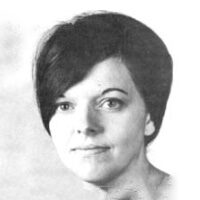Elizabeth Pond
- 1969

Fellowship Title:
- Vietnam
Fellowship Year:
- 1969
The Chau Trial III: Aftermath
Will Thieu’s passive consensus now unravel? Probably. One could answer this question in any fashion, however yes, no, various maybes – and be able to cite supporting evidence. President Nguyen Van Thieu can argue that the fuss over Tran Ngoc Chau proved limited and short-lived, and that the objective of silencing would-be opposition was effectively achieved by means of the trial. Chau turned out, as Thieu had calculated, to have so little positive support that he was never even adopted by oppositionists as a martyr of convenience. Thieu’s most vocal critic, Senator Tran Van Don, for example, said very little about the Chau trial and said it very late. (Symbolically, Don never got on a Senate slate in the elections this fall and no longer has the Senate floor from which to launch his attacks). In general, opposition groups have subsided back to their usual wait-and-see stance pending some favorable nod from the Americans. As for the legislature’s reaction to the whole affair, a Senate committee condemned Chau’s arrest inside the legally inviolate Lower House,
Portrait of a Revolutionary, Part II
Anh Hai’s frequent talks with us were conversational in mood, but one-directional. For the most part he spoke, and we listened, made non-committal comments, or asked questions. Hai’s tone was one of relating self-evident truth, which was exclusive and all-encompassing. It allowed for no alternative truth or even any objectivity that was not in its service. Hai was matter-of-fact rather than belligerent about it, but he clearly assumed that any intelligent and good person already did agree with him or would agree once he was enlightened. This assumption embraced us, but there was no attempt to make us state any assent. There was no brainwashing and no requirement of self-criticism on our part. The talks themselves were very casual, just part of the normal coming and going in the houses we were living in. Hai would perhaps sit down in the partition doorway if we were in a separated area or—later, after we were all living in the same room—just bring some tea and begin chatting as we shared the glasses. He might start by
Portrait of a Revolutionary, Part I
“There are two things a revolutionary has to watch out for:” Anh Hai informed us in one of his more discursive moods, “tigers and snakes.” (There was some momentary confusion, as Mike initially thought the Vietnamese word was “monkey” rather than “tiger,” and for an instant we conjured up visions either of small rock-throwing impudents or of large megalomaniacal gorillas. The semantic mix-up was soon straightened out, though, and Hai continued). If you meet a tiger, the thing to do is to strike the ground, and the tiger will become frightened and run away. If he gets too scared and just curls up in a ball on the spot, however, then blow a whistle and he will depart. We never had the opportunity (fortunately) to test this strategy firsthand, so we never did find out if this particular bit of counsel was gospel or whimsy. If anyone were to know how to deal with tigers, however, we were convinced it would be Anh Hai. In his mid-forties, Hai was a 25-year veteran of the Vietnamese
Student Protest
April, 1970 I stopped outside the barbed wire concertina and identified myself as a journalist. The boys guarding the gate released a taut rope inside the wall, springing the wire coil open to admit me. To my left was the monument to the first monk to immolate himself – on this spot – in the Buddhist struggle against President Ngo Dinh Diem in 1963. In front of me, defending the building entrance, were a table with flowers and incense and two cement lions’ heads that had been severed from their nearby cement bodies. Daubed on the heads in red paint were epithets against Premier Lon Nol and other Cambodian leaders. “USA” was painted on the nose of one lion. Attacks on the South Vietnamese government were discreetly absent. Between the lions’ heads one girl with a rag was swabbing the front steps with more industry than hope of enduring success. The scene was the Cambodian Embassy in Saigon, boarded up since the last months of Diem when Cambodia broke diplomatic relations with South Vietnam,
The Chau Trial II: Denouement
April/July, 1970 The III Corps Tactical Zone Mobile Military Field Court is something of a misnomer. Located as it is in the middle of the Saigon navy yard just off the docks of the Saigon River, it is not exactly in the III Corps Tactical Zone. Nor is it mobile. Nor is it in the field. It is, however, decidedly military. The field courts–there is one for each of the four corps areas in South Vietnam–were instituted in 1962 in the waning months of President Ngo Dinh Diem. They do try military cases, such as desertion, but their most famous role, since the beginning, has been political. Diem set them up deliberately, as the euphemism has it, to “consolidate” his regime. Any case involving national security, even when the defendant is a civilian, is handled by these courts. And the rubric of national security can encompass anything. The biggest of the Diemist political trials in the III CTZ Mobile Military Field Court involved some 40 would-be opposition politicians, including the most popular National Assemblyman
